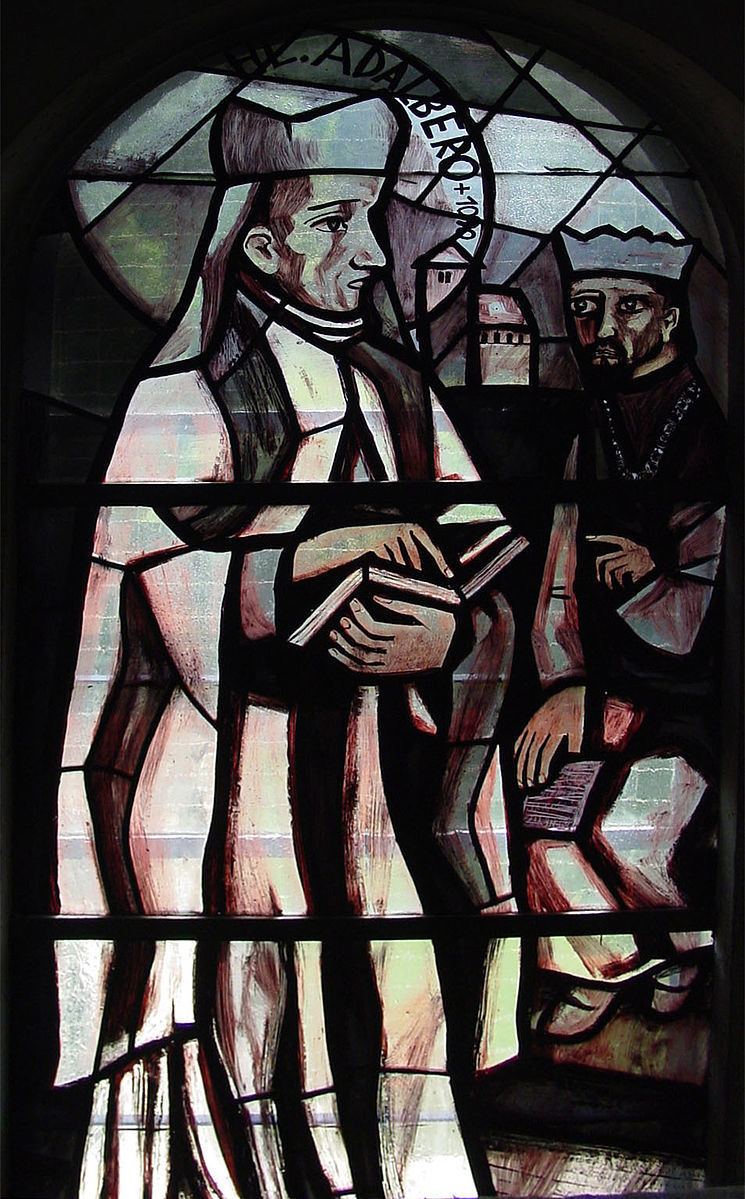Name Adalbero Wurzburg | ||
 | ||
Adalbero of Würzburg (or Saint Adalbero) (c. 1010 – 6 October 1090) was Bishop of Würzburg and Count of Lambach-Wels.

He was the son of Count Arnold II of Lambach in Upper Austria (of the family of the Counts of Formbach) and his wife the Countess Reginlint. He was born around 1010 in Lambach an der Traun. After his studies in the cathedral school at Würzburg Adalbero entered the service of King Henry III, who in 1045 nominated him as successor to Bruno as Bishop of Würzburg.
Bishop Adalbero continued the construction of the new cathedral begun by Bruno and established the "Neumünsterkirche" ("New Minster Church") (built between 1058 and 1063). Significant contributions in the reform of ecclesiastical life are attributed to him. He was in close contact with the reformers at Cluny, Gorze and Hirsau. He brought the monk Egbert from Gorze, who proved extremely effective firstly in bringing about the renewal of Münsterschwarzach Abbey and then, through the spread of the subsequent Münsterschwarzach Reforms, in exerting an influence far beyond it, from Harsefeld Archabbey near Stade in the north to Melk and Lambach (a reformed Benedictine abbey founded by Adalbero himself in the castle of his family) in the south. In 1057 Adalbero re-settled the abbey of St. Peter, Paul and Stephen in Würzburg, until then a college of canons regular, with Benedictines from Münsterschwarzach.
After the death of Henry III, Adalbero intensified his involvement in the councils of the empire and the court and in synods, and gained a reputation as an advisor and mediator. In 1066 in Würzburg he performed the marriage ceremony between Henry IV and Bertha of Savoy. Together with other princes he brokered the Peace of Speyer in 1075.
In the Investiture Controversy which broke out shortly afterwards Adalbero took the side of Pope Gregory VII in opposition to Henry IV. Gregory objected to the practice of the appointment of bishops being vested in territorial princes rather than in the papacy. The Synod of Worms however supported Henry against Gregory's ideas and declared the Pope deposed, whereupon Gregory excommunicated Henry, forcing him to go to the Pope at Canossa to beg for absolution.
Having obtained this, however, the dependency of the bishops on the king was once again reinforced. Adalbero and other princes therefore in 1077 appointed as anti-king Duke Rudolf of Rheinfelden. The citizens of Würzburg however remained loyal to Henry IV and barred Adalbero's return to the city, to which King Henry appointed a series of anti-bishops. Adalbero rejected all attempts at mediation, saying that he would die rather than yield. At the Synod of Mainz in 1085 therefore he was formally deposed and banished.
In 1086 Rudolf of Rheinfelden returned him to Würzburg, but he was soon ejected again. He remained faithful to the pope, and thereafter immersed himself in work at his monastery in Lambach. He was also co-founder of Zwiefalten Abbey in Swabia. On 6 October 1090 he died in Lambach and was buried in the abbey church which he himself had founded and dedicated.
Veneration
Soon after his death he began to be venerated as a saint in his Austrian home, and his veneration in Münsterschwarzach is evidenced since the 17th century.
In 1883 Pope Leo confirmed Adalbero a saint in the worldwide church. In the "Neumünsterkirche" in Würzburg since 1948 there has been a glass shrine, by Josef Amberg, containing a thighbone of Adalbero as a relic. Also in Würzburg is the neo-Romanesque St. Adalbero's church.
